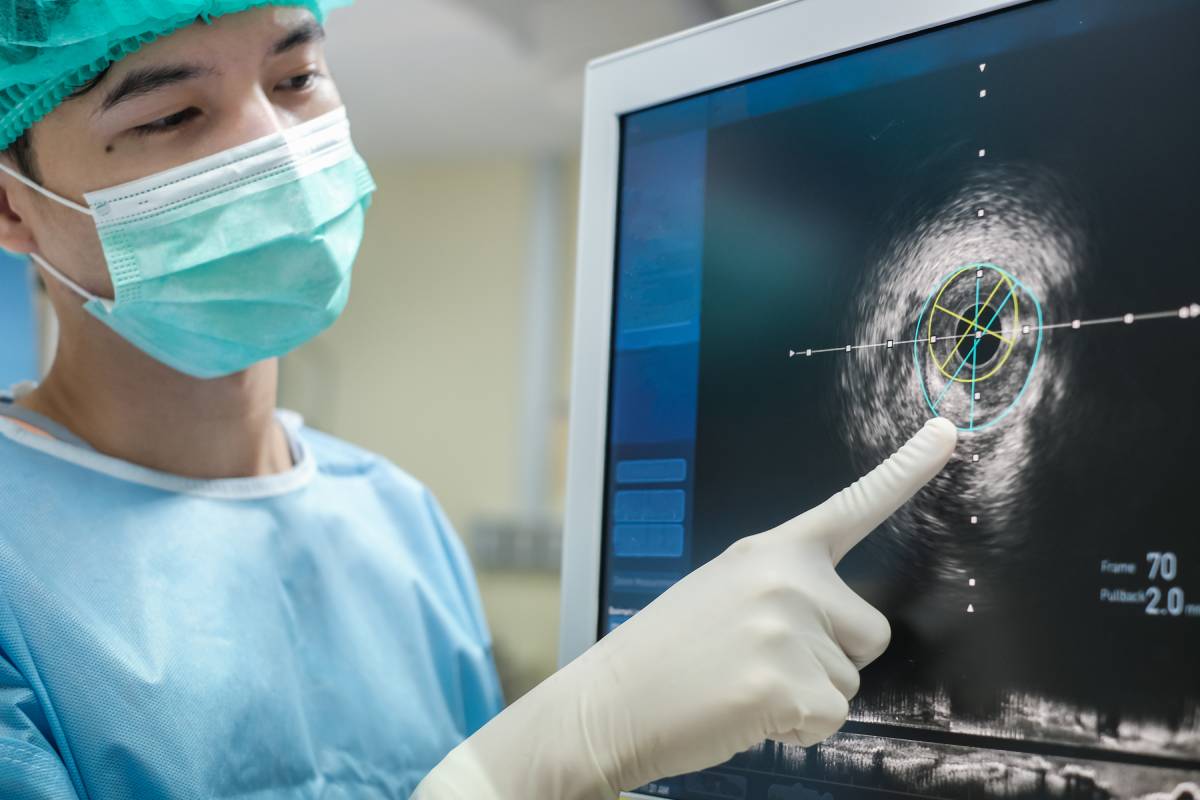Pocket vs Full-Size Ultrasound in Anesthesia

Ultrasound has become essential in anesthesia for guiding procedures like peripheral nerve blocks and central venous catheter placements. Traditionally, full-size, cart-based ultrasound machines have been used, but pocket devices used for point-of-care ultrasound for anesthesia have emerged as compact, accessible alternatives.
Both ultrasound device types enable real-time visualization of anatomy and needles, increasing accuracy and decreasing complication rates compared to landmark techniques for anesthesia procedures. By visualizing target nerves or vessels directly, anesthesiologists can place needles more precisely, avoiding structures like arteries or lungs1. Though pocket ultrasound typically offers more basic imaging and smaller screens, these devices have shown only minor differences in image quality compared to full-size systems for peripheral blocks and neuraxial anesthesia. For the depths and structures commonly involved in nerve blocks or line placements, handhelds generally provide sufficient detail. However, some reports support the finding that for certain applications, full-size systems provide superior image quality compared to handheld devices2. According to the Anesthesia Patient Safety Foundation, pocket ultrasound is often sufficient for binary clinical decisions, while full-size ultrasound is preferred for higher-quality detailed imaging3.
Handheld pocket ultrasounds weigh under 1 pound and can connect to smartphones or tablets, making them ideal in tight spaces like crowded operating rooms or emergency settings. They boot quickly and run on battery power, enabling rapid deployment. In contrast, full-size machines may weigh over 100 pounds, take minutes to boot, and require more space to maneuver, making them less practical in time-sensitive bedside settings3,4.
In urgent cases, handheld devices improve responsiveness by increasing access to ultrasound. Anesthesiologists have reported faster diagnoses and interventions when handhelds are immediately available—crucial during airway emergencies, trauma, or hemodynamic instability. One hospital reported that pocket ultrasound helped identify reversible causes of deterioration and avoided unnecessary ICU transfers3.
Cost is another major distinction. Full-size machines can cost tens of thousands of dollars, with additional expenses for maintenance contracts and transducer replacements. Handheld devices usually cost a fraction of that—typically $2,000 to $6,000—making it possible to equip multiple anesthesia teams for the cost of one traditional system. One study showed a hospital increasing its available ultrasound units from two to six by investing in handhelds alone2.
Pocket ultrasound also supports training for anesthesiologists. Because they’re affordable and portable, trainees can practice more often during simulations or in clinical settings. Frequent scanning builds skills in needle visualization and anatomical recognition. Some devices allow remote image sharing via cloud platforms, enabling real-time supervision5. Handhelds also tend to have simplified, app-based interfaces, which lowers the learning curve for beginners. Over time, this accessibility contributes to more confident and competent anesthesiologists. Greater use translates to improved block success rates and fewer complications2.
In summary, both full-size and pocket ultrasound devices support the core benefit of real-time guidance in anesthesia. Full-size systems may offer improved imaging performance and are preferred for large clinics and specialized imaging. However, handheld devices are highly effective for routine anesthesia procedures and provide unmatched portability, faster access, and lower costs.
References
- Lewis SR, Price A, Walker KJ, McGrattan K, Smith AF. Ultrasound guidance for upper and lower limb blocks. Cochrane Database Syst Rev. 2015 Sep 11;2015(9):CD006459. doi: 10.1002/14651858.CD006459.pub3. PMID: 26361135; PMCID: PMC6465072.
- Salimi N, Gonzalez-Fiol A, Yanez ND, Fardelmann KL, Harmon E, Kohari K, Abdel-Razeq S, Magriples U, Alian A. Ultrasound Image Quality Comparison Between a Handheld Ultrasound Transducer and Mid-Range Ultrasound Machine. POCUS J. 2022 Apr 21;7(1):154-159. doi: 10.24908/pocus.v7i1.15052. PMID: 36896280; PMCID: PMC9979954.
- APSF. Portable Point of Care Ultrasound (PPOCUS): An Emerging Technology for Improving Patient Safety. https://www.apsf.org/article/portable-point-of-care-ultrasound-ppocus-an-emerging-technology-for-improving-patient-safety/
- Le MP, Voigt L, Nathanson R, et al. Comparison of four handheld point-of-care ultrasound devices by expert users. Ultrasound J. 2022;14(1):27. doi:10.1186/s13089-022-00274-6.
- Baribeau Y, Sharkey A, Chaudhary O, Krumm S, Fatima H, Mahmood F, Matyal R. Handheld Point-of-Care Ultrasound Probes: The New Generation of POCUS. J Cardiothorac Vasc Anesth. 2020 Nov;34(11):3139-3145. doi: 10.1053/j.jvca.2020.07.004. Epub 2020 Jul 7. PMID: 32736998; PMCID: PMC7340048.
